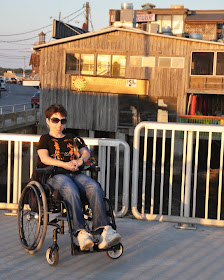
KEITH MYERS
By Steve Wright
With offices in Pasadena and Winter Park, Florida, the MSI firm also is active in public park, city master plan, resort, town center, industrial to mixed use and amusement park design.
Myers’ next project is converting an 80-acre former grocery chain warehouse complex in an inner-ring suburb into another Nationwide-developed urban center with ground floor retail and office or residential above.
“I consider myself an urbanist: New, Old -- it does not matter to me” Myers said. “I do love some of the research and the passion of the New Urbanists, if I don't always agree with the dogma.”
“When the New Urbanists first banded together, there was a distinctive mission. In 1980, few people cared about creating great urban space. The rules were stacked against it and the attitudes of bankers, engineers, planners and politicians were even worse. It was a crusade. One that I think has been largely successful,” Myers continued.
However, Myers cautions against the Congress for New Urbanism becoming to rigid.
“I worry that the Charter is too narrow and that those who explore outside its boundaries are dismissed as 'not in the club.’ Not a healthy outlook,” he said. “Curiosity is the first sign of intelligence. Curiosity gave birth to the NU movement, and it is the only thing that will sustain it. Rhetoric and rules won't.”
Wright has written for a living for 25 years, with nearly 5,000 published articles. He lives in historic Little Havana and is very active in Miami’s urban issues. He and his wife of 20 years also are involved in making new and old towns more accessible for people with disabilities.


























